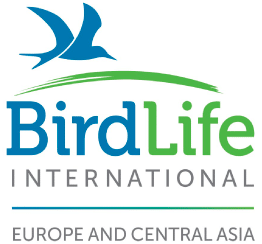Türkiye
Climate: Mediterranean, Continental, and Marine
Habitats: Forest, Mountains, Plains, Sea, Wetlands, Semi-desert, Steppe
Nestled at the crossroads of Asia, Africa, and Europe, Türkiye unfolds its natural splendor like a vibrant tapestry. It possesses a unique topography, geomorphology, and climate and hosts exceptionally rich and diverse fauna and flora. So far, 500 bird species have been recorded – of which 370 are regularly observed – accounting for about 70% of European bird species.
This high diversity in avifauna has inevitably forged a bond between birds and human. Already 9000 years ago, this relationship was engraved with bright red paint on the walls of the Neolithic and Chalcolithic settlement, Çatalhöyük, in southern Anatolia. Cranes and storks frequently appear in Turkish mythology, folk songs, poems, and art.
Even today, when our connection with nature is on the verge of disappearing, shepherds and vultures are still in close contact. Vultures faithfully build their nests next to shepherd’s stockyards because they use the wool of the sheep and goats to build their nests. In return, vultures help shepherds find their lost animals.
Yet a concerning situation is unfolding for the birds of Türkiye. Despite their protected status, bird species face increasing illegal hunting every year.
According to the International Union for Conservation of Nature (IUCN), the number of globally threatened species in Türkiye has increased fourfold in the last decade, reaching 400 species.
In order to hunt legally, one must complete a training, pay for a certificate, and renew a hunting permit by paying an annual fee. The hunters must adhere to the hunting quota, days, and areas set by the Central Hunting Commission. Licensed hunters can be inspected by officers as they must submit the place and time they hunt into the Hunting Information Management System (AVBIS).
Due to these ‘high’ requirements to hunt legally, many hunters do not officially register. In 2022 alone, the number of registered hunters added up to 329,000. But it is estimated that at least three to four times this number of poachers were active. Including in areas where hunting is not allowed.
There are simply not enough law enforcement officers and hunting inspectors to prevent illegal hunting activities.Remarkably, authorities decided to add endangered species to the lists of animals allowed to be hunted and increased hunting quotas, instead of increasing sanctions and penalties for poaching. It is also problematic that the Central Hunting Commission, which is mostly made up of hunters, rarely consults scientists and non-governmental organisations to make informed and science-based decisions on hunting criteria.
Our Partner Doga Dernegi is actively working to mitigate illegal hunting and wild animal trade. In 2018, they ran an anti-hunting campaign, bringing together over 230 NGOs working on a national and international scale in Türkiye. Hundreds of thousands of nature lovers called for the total ban of hunting of the European Turtle-dove (Streptopelia turtur) and the Common Pochard (Aythya ferina), both of which are have rapidly declining populations. Thanks to Doga’s actions, the Central Hunting Commission lowered the hunting quotas of the European Turtle-dove and the Common Pochard. The Commission also reduced the number of hunting days across the country from four to three. Doga also established an anti-poaching network.
The fight to protect biodiversity and defend the rights of nature is not over yet. But Doga untiringly carries on their work so that, one day, we can live in harmony with birds again.

